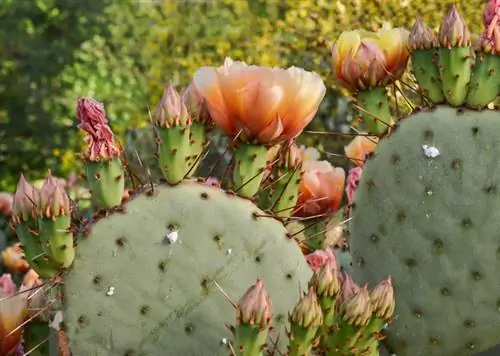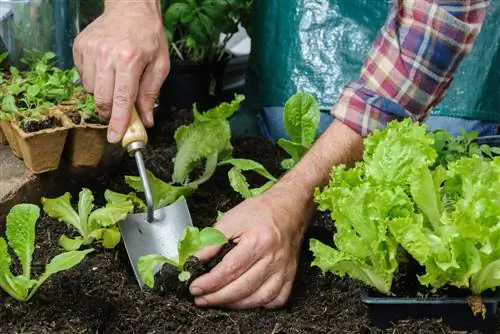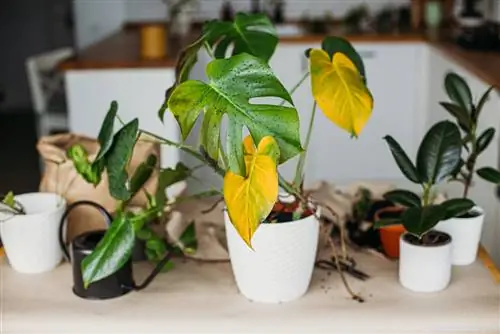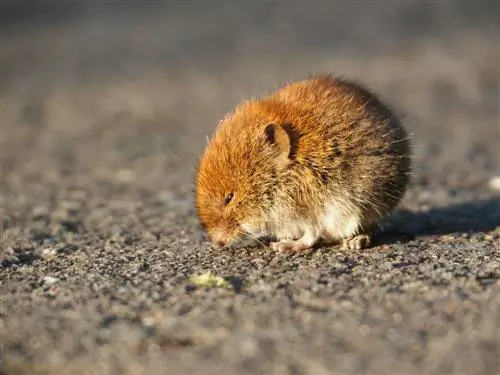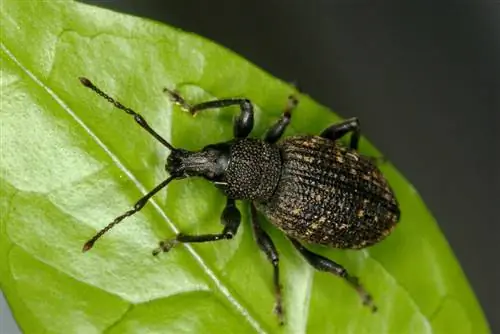- Author admin [email protected].
- Public 2023-12-16 16:46.
- Last modified 2025-01-23 11:22.
Various vermin often settle in potting soil. An infestation is often recognized too late, so that the cultivated plants have already been damaged and massive action has to be taken against the pests.
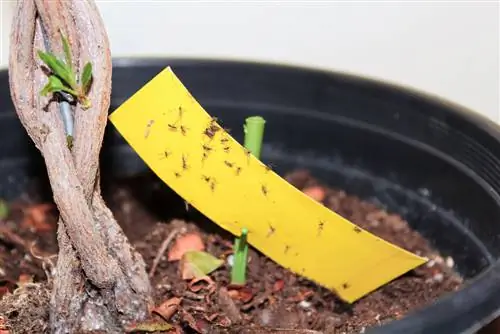
Which pests occur in potting soil and how do you fight them?
Various species of pests such as fungus gnats, lilies, springtails and root mites can occur in potting soil. Yellow tablets, tobacco, nematodes, soft soap with spirit, immersion baths or watering with wormwood tea are suitable for combating.
Which pests can occur in potting soil?
Introduced through infested potting soil, vermin can usually multiply over a long period of time. The infestation was discovered by chance. The most common pest species in potting soil include:
- Sad gnats
- Lily Chicken
- Springtails
- Root mites
Sad gnats
Small black flies lay their eggs in the potting soil, where after a while the whitish larvae develop and cause damage to the plants.
Lily Chicken
Small, fiery red beetles buzz around the plant and lay their eggs in the potting soil. White larvae develop that cause great damage to the leaves and stems of the flowers.
Springtails
If small animals jump around on the potting soil, they are springtails, which multiply a lot but cause little damage.
Root mites
The mites sit on the stem of the plant and in the soil. They damage the roots, bulbs or tubers of the plants.
Various malicious images
Science gnat larvae damage the plant roots, causing the plant to die.
The voracious larvae of the lily chicken remove all juice from the leaves, which dry out and fall off. If there are no leaves left, the stem is sucked in.
Normally, springtails feed on dead plant material and do no harm to the plant. If there is a lack of food, they eat young plant greenery, but cause little damage.
Root mites damage plants when they appear in large numbers. Flowers and leaves of the plant droop, leaves turn yellow and fall off. Little by little, all parts of the plant dry out.
Control measures
Home remedies should always be used first. An insecticide destroys the bugs quickly, but other plants, animals and even humans are also affected by the poison.
The following are considered non-toxic but effective remedies against vermin:
- Yellow panels, they attract animals, they stick and die.
- Tobacco incorporated into the soil helps against fungus gnats.
- Nematodes, the roundworms, feed on the larvae of all vermin.
- Add soft soap and 2 teaspoons of spirit to water, spray plants with it until dripping wet, helps against lily chickens.
- A dip for the plant will drive away springtails.
- Watering with wormwood tea helps against root mites.


